Happy Earth Day!
Teaching kids awareness of human impact on the environment and inspiring them to be a part of the solution is vital to our future on this planet. For this reason, we conducted a fun, hands-on activity that simulates an oil spill and challenges kids of all ages to clean up the simulated disaster and its effect on wildlife.
How are you celebrating, or I should say, how are you educating on this national holiday promoting environmental consciousness? Earth Day came about in 1970 when Senator Gaylord Nelson was compelled by the devastation of the 1969 oil spill in Santa Barbara, California to force environmental protection into the political spotlight. The ravages of an oil spill are far-reaching and really highlight the effect people can have on our world. Let’s get back to what inspired the movement and creation of Earth Day and clean up an oil spill!
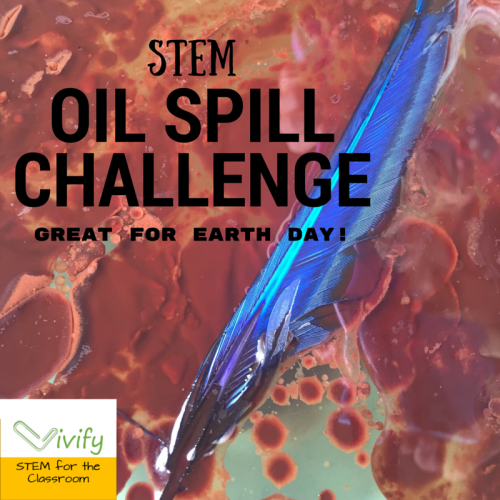
Easy and fun STEM activity promoting environmental consciousness
Oil Spill Challenge Set-up
The following supplies are used to complete this activity. Quantities of each item will vary based upon your needs. For detailed information on the supplies used in our classroom setting and where to find them, visit our blog post here.
Materials:
- Cotton balls
- Container
- Sponge
- Vegetable oil: amount depends on the container, use a 1:4 oil to water ratio
- Plastic spoons
- Dawn dish soap
- Plastic cups: to put soap and cotton balls in
- Cocoa powder: to mix with oil and make it look like crude oil
- Bird feathers
Using this Activity in the Classroom
Each group will need to clean up “oil” from a simulated oil spill disaster that includes feathers to represent marine life. The learning objective is to increase understanding of an oil spill disaster and environmental consequences. This activity is a great Life Sciences challenge that also incorporates engineering and math concepts.
To set the stage for your students, begin with a discussion about the BP Oil Spill disaster in 2010– the largest accidental ocean oil spill on record. Pictures of the effects on marine plants and animals as a result of the oil spill can help the students connect the real-world application to the challenge.
To complete the challenge, students can be given this mission:
Your engineering company has been tasked with cleaning up a major oil spill disaster. You can only use the provided materials to clean up all the oil from the feathers and from the water. Place all collected oil into the provided container.
Then the activity may resume in a few different ways, depending on the constraints of your class. You may set a time limit to allow the students to clean up the oil spill and feathers as much as possible. Then discuss the challenges faced with the different methods and materials used to try to eliminate the oil. Another option is to make this challenge a competition and say that the challenge is only successful if a specific amount (say 5 inches in a cup) of oil is collected.
Because the oil is separated from the water, qualitative comparisons may be observed and measured then used to complete math problems related to this activity. Math extension problems are included in a comprehensive product of this oil spill activity found here.
This product includes:
- Common Core Standards for the math extension problems
- Engineering Design Process poster
- Oil Spill Lesson Plan
- Materials list and activity suggestions
- Student handouts including information on BP Oil Spill, clean-up efforts, and environmental consequences
- Mission sheet
- Brainstorming worksheet
- STEM Career Connection
- Math Connection: Percentages, Measurements, Volume
- Reflection Questions
For an extended explanation about using this product in your classroom along with tips, please see our related post on our website.
Using this Activity with Littles at Home
This activity is fun for small children at home as well. I opened the lesson with my preschooler in the same way as in the classroom, by showing pictures and videos of the BP Oil Spill and the animals that were affected. My daughter was especially concerned about the well-being of the marine life. We discussed how it is up to people to protect the environment from harm and to clean up any messes we make. Then the fun began!
The set-up is the same for a classroom but on a smaller scale. I used colored feathers to make it more obvious and motivating to remove all of the oil.
Tips:
- Depending on the age and maturity of your child, I would recommend completing this activity outdoors
- This can get really messy and oil can stain, so be mindful of clothing and shoes
- Add the oil/cocoa powder mixture to the water in a very small amount so that it is easily seen as separate and more easily removed
- Toddlers can use this as a sensory activity with spoons and other utensils to move around the “oil” blobs in the water and play with the feathers
- Create a certificate or prize for your little environmental engineer once they have cleaned up the oil spill! Talk to them about the real-life careers that deal with these environmental issues– Petroleum Engineers, Marine Biologists, and many more!
We hope your kids and students have fun and are inspired by this Earth Day STEM Challenge!

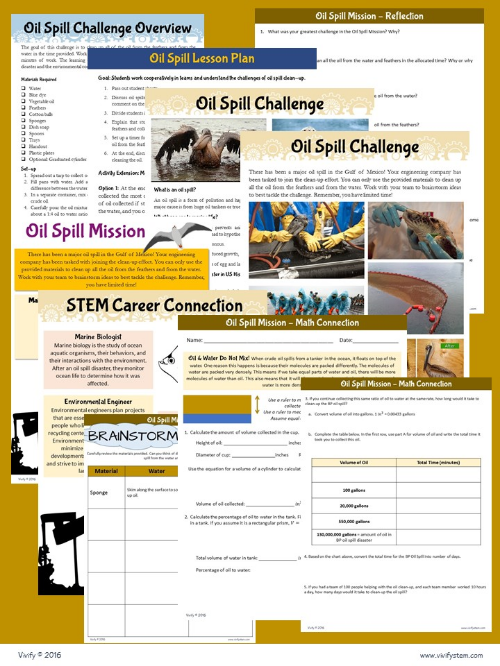
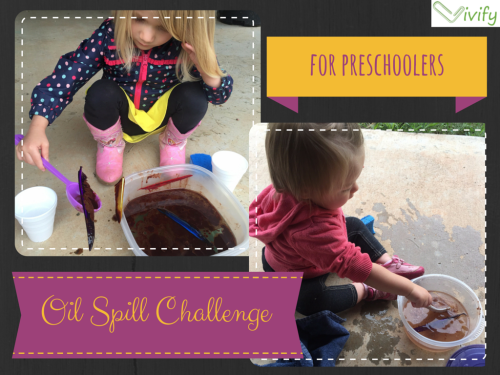
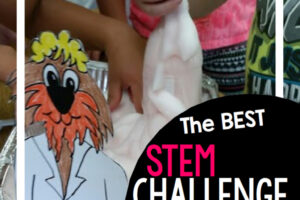
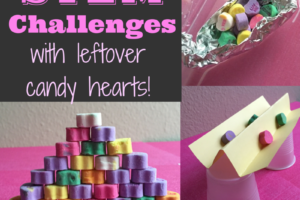
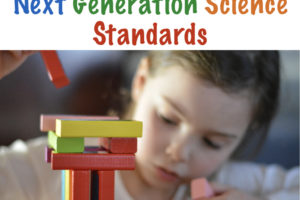
2 Comments
Leave your reply.